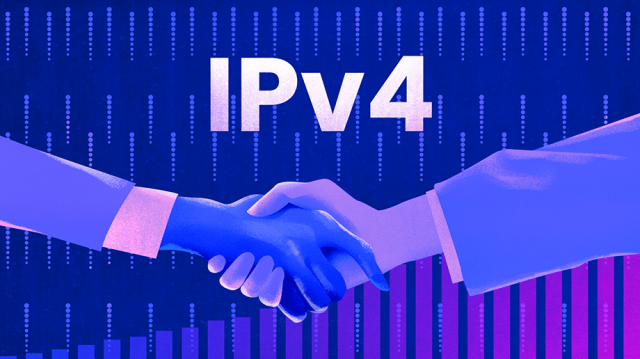Internet Protocol version 4 (IPv4) has supported digital communication for more than 40 years. IPv4 influenced the way the world communicates since it linked primitive networks to powering up billions of online devices. In recent times, however, with the development of technology and the increasing number of devices, IPv4 has become very popular. The constraints of IPv4 have become more common in the modern world of networking, which now has the IoT, and is mobile. This blog discusses what is the limitation of the IPv4 protocol, how it has affected modern networks, and how companies are shifting to IPv6 or IPv4 address trading as a way of keeping up with the times.
Insights About the Limitations of the IPv4 Protocol
1. Limited Address Space
IPv4 has a 32-bit address space, which accommodates 4.3 billion addresses. This space is too small as there are more than 10 billion devices that associate with the Internet. Hence, this depletion of addresses resulted in the creation of Network Address Translation (NAT) and private IP ranges that hold back the inevitable use of IPv4.
2. Security Shortcomings
When you buy IPv4 address, remember that it was not according to the current-day cybersecurity. Some of the features, such as the IPsec encryption, are not mandatory and allow hackers some vulnerabilities. IPv6, on the other hand, has IPsec as a default, which has enhanced protection of data.
3. Complexity and Management Issues
Due to the NAT and subnetting, the IPv4 networks may prove challenging to manage and administer. The routing of many devices with a single public IP may make it difficult to connect or more complex to peer-to-peer.
4. Lack of Quality of Service (QoS) Support
The IPv4 does not have much network traffic prioritization. In such sectors as streaming, VoIP, and gaming, it may lead to performance problems and latency.
5. Lack of Auto-Configuration
IPv4 is to be configured manually or set up with DHCP. Conversely, IPv6 includes automatic configuration. This makes it easy to use in huge networks such as IoT ecosystems.
The Impact of IPv4 Limitations on Modern Networking
The limitations to lease IPv4 addresses in terms of scalability and efficiency are experienced in an era of cloud computing, real-time data, and IoT. Businesses will have to depend on complicated network structures to defeat address space inadequacy. This costs more and slows down innovation and overhead.
To the service providers, the loss of IPv4 implies that there is a challenge in growing the networks and acquiring new customers. It further makes connectivity in the world difficult, with specific areas having limited IPv4 connectivity.
With the increased use of IPv6, there are also issues of interoperability between IPv4 and IPv6 systems. The systems usually require translation mechanisms to communicate effectively. Although IPv6 has its benefits, complete switching cannot be immediate. IPv4 address trading is a critical solution for companies that heavily depend on IPv4.
IPv6: The Next Generation of Internet Protocol
Introduced as late as the 1990s, IPv6 was created to address fundamental shortcomings of IPv4. It has 128-bit addressing that will accommodate an astronomical number of unique IP addresses. This is enough to serve all connected devices for centuries ahead.
In addition to scalability, IPv6 has secure features, routing simplification, and auto-configuration built which simplify contemporary networking. Nonetheless, the problem of IPv6 adoption has been slow in adopting the technical superiority of IPv6. This is because of compatibility problems, the cost of infrastructure, and existing IPv4 dependencies.
Until the complete transition occurs, the idea to rent IPv4 address will still be essential. IPv4 address trading platforms have come in to assist organizations to get the resources that they require.
IPv4 Address Trading: A Practical Solution for Businesses
With the scarcity of IPv4 addresses, organizations are resorting to the IPv4 marketplace. This is a secure and compliant environment that businesses can use to obtain or sell, or lease IP addresses that are not in use.
This can be made easy through platforms such as IPv4 TradeHub, which offer checked listings, open pricing, and regulatory compliance support. In the case of companies that are yet to implement IPv6 fully, the IPv4 trading provides a cheap but short-term solution to sustain network expansion and scalability.
It also helps companies that have more than enough IPv4 blocks. It enables them to sell their unused resources and helps in the more efficient redistribution of resources throughout the Internet.
FAQs: Common Questions People Often Ask
1. Why is IPv4 still used today?
Even with its address depletion and scalability challenges, IPv4 is still used as it is more compatible, simple, and has a wide range of infrastructure support.
2. What is the principal weakness of IPv4?
Its greatest weakness is the use of a 32-bit address space. It can only accommodate 4.3 billion addresses, thus the global IPv4 is depleted.
3. What is the impact of IPv4 on networking?
IPv4 hinders scalability, makes management of the network more difficult. It relies more on NAT, which slows down the growth of IoT and cloud infrastructure.
4. What is the alternative to IPv4 in the networks?
IPv6 is a replacement of IPv4 to have 128-bit addressing. It has limitless scalability and has inherent security, and easy network configuration to connect with any place worldwide.
5. Are businesses still getting IPv4 addresses?
Yes. Companies can purchase, sell or lease IPv4 addresses in safe markets such as IPv4 TradeHub.
Get Reliable IPv4 Solutions with IPV4 TradeHub
Need IPv4 addresses for your growing network? IPV4 TradeHub makes buying, selling, and leasing IPv4 addresses simple, secure, and compliant. Our platform connects verified buyers and sellers worldwide, ensuring transparent transactions and competitive pricing. Whether expanding infrastructure or monetizing unused IPs, IPV4 TradeHub helps you scale confidently in the modern Internet landscape.
